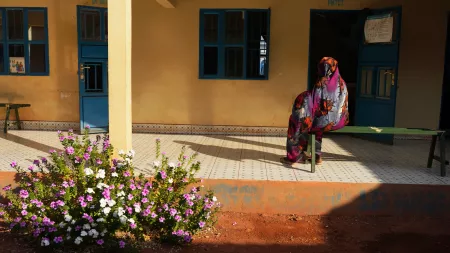South Sudan continues to be one of the deadliest places to be an aid worker, according to analysis done by CARE International on data from the Humanitarian Outcomes Aid Worker Security Database. Forty-four aid workers have lost their lives globally since the beginning of this year, including 11 in South Sudan, 8 in Afghanistan and 7 in Myanmar. Not only are these three countries among the most dangerous places for aid workers, they are also incredibly challenging places for citizens, with nearly 40 million people facing hunger across these countries.
Abel Whande, CARE South Sudan Country Director, said, “South Sudan is facing its worst hunger crisis since it gained independence 11 years ago. That the very people committed to easing suffering and supporting the most vulnerable continue to be killed, is horrifying. Failing to ensure the safety of humanitarians means disruptions to vital aid operations, and with 7.74 million people in South Sudan facing acute hunger, these disruptions could mean the difference between life and death for some. And this year, the knock-on effects of the Ukraine crisis are exacerbating the situation, with sharp increases in the cost of food and fuel causing more pain and suffering.”
The single deadliest day for aid workers in 2022 so far occurred in Afghanistan, when eight polio vaccinators were killed while conducting home visits on 24 February. Polio vaccinators have frequently been targeted in Afghanistan, one of only two countries where wild poliovirus is endemic – the other country being Pakistan.
CARE Afghanistan’s Humanitarian Advocacy Advisor, Mélissa Cornet, said, “It’s devastating that eight aid workers have died in Afghanistan this year. They were doing incredibly important work in a country that is in the midst of a complex humanitarian crisis - nearly 19 million people face acute hunger, the economy has all but collapsed, affected communities are still reeling from last month’s deadly earthquake and the price of food and everyday essentials has skyrocketed over the past year. Women and girls are often disproportionately affected in times of crisis and this crisis is no exception. We continue to hear reports of girls being married at a young age just to help the family survive. It’s essential that aid workers - including women humanitarian workers who are so critical to reaching women and girls - are protected, so they can continue carrying out lifesaving work.”
So far in Myanmar in 2022, seven humanitarian workers have died. “One million people are now displaced in Myanmar and over 13 million people in the country face hunger. It is crucial that aid workers are protected, and humanitarian organisations have unimpeded access to affected communities to carry out vital work,” said Nate Rabe, Country Director for CARE International in Myanmar.
Three aid workers have died in attacks in Ukraine this year - the first aid worker deaths in the country since 2014. “The security situation for aid workers has deteriorated sharply since the escalation in conflict in February this year. With a third of Ukrainians displaced from their homes and millions still inside the country, it’s more important than ever that the safety of humanitarian workers is preserved so they can carry out critical work,” said Richard Simpson, CARE Country Representative Ukraine.
“While the situation is incredibly difficult and precarious for so many in Ukraine, tragically, we are witnessing several donor governments re-directing overseas development assistance, especially to respond to the crisis in their own countries, which indirectly impacts funding for other humanitarian crises. As a result, humanitarian appeals of countries experiencing the worst hunger and famine-conditions, including Somalia, Mali, Niger, Afghanistan and South Sudan, are drastically under-funded," said Delphine Pinault, Humanitarian Policy Advocacy Coordinator & UN Representative for CARE International.
This year’s World Humanitarian Day theme #ItTakesAVillage is inspired by the saying ‘It takes a village to raise a child.’ Similarly, it takes a village to support a person in a humanitarian crisis – aid agencies, local volunteers and emergency services come together to provide urgent health care, shelter, food, protection, water, livelihoods and much more. Ms Pinault said, “And with the world facing an unprecedented hunger crisis, the international donor community plays a crucial role in ensuring funding decisions are strictly needs-based and not politically driven.”
Notes to the editor
-
Analysis is based on the Humanitarian Outcomes’ Aid Worker Security database where incidents are defined as deliberate acts of violence affecting aid workers, such as killings, kidnappings, and attacks that result in serious injury: https://aidworkersecurity.org/incidents/. Numbers in the database for 2022 are provisional, with full official annual figures released at the end of calendar years. 2022 figures are available here: https://aidworkersecurity.org/
-
There have been 73 major attacks on aid workers so far in 2022 with 44 deaths this year (numbers accurate as of 1 August). The majority of deaths, 95%, involved national staff (42 out of 44 deaths were national staff. The two international staff were killed in South Sudan and Mali). South Sudan tops the fatalities list so far in 2022 with 11 deaths.
-
Funding of humanitarian response plans https://hum-insight.info/
For media enquiries, contact Suzy Sainovski, Senior Humanitarian Communications Coordinator – CARE International, [email protected].
